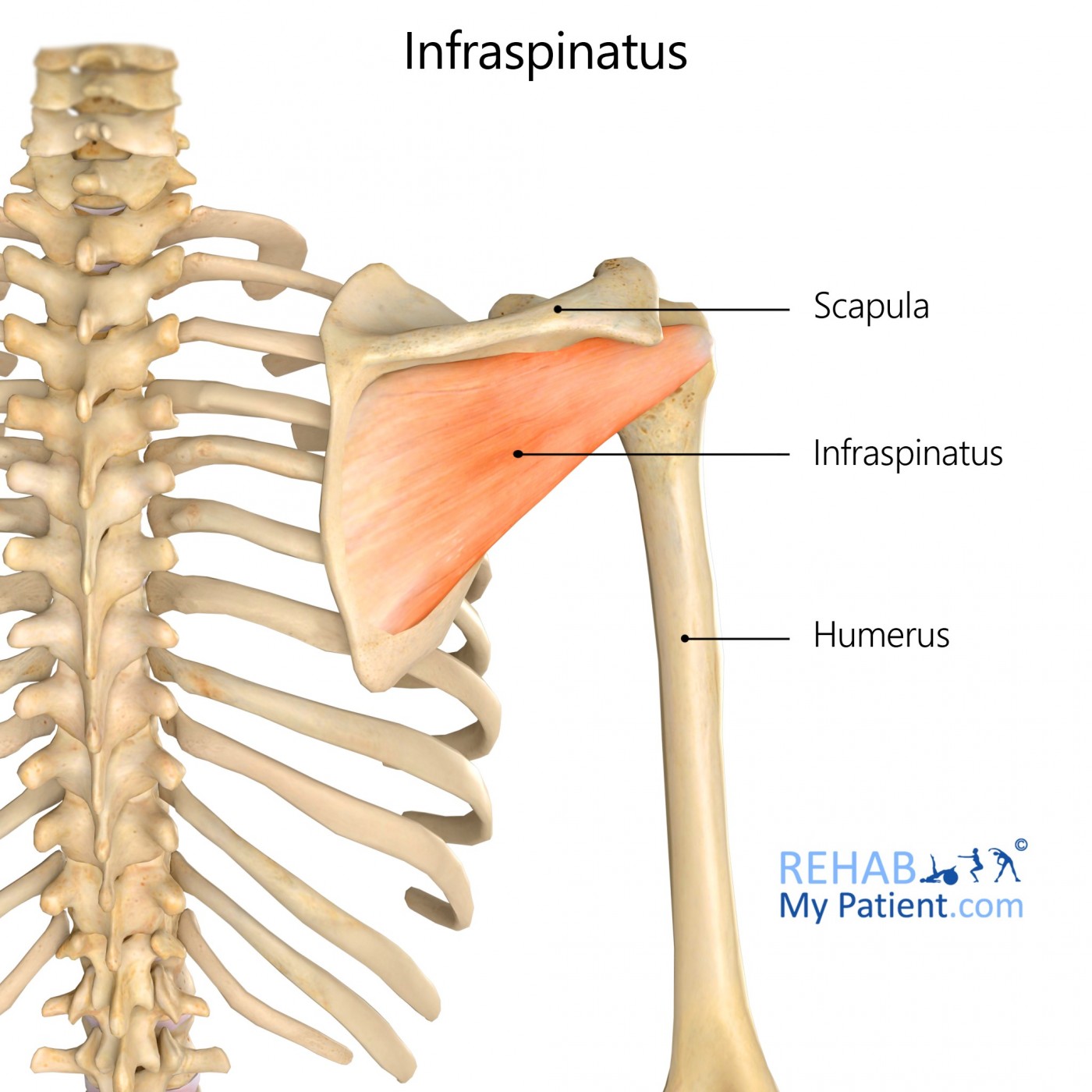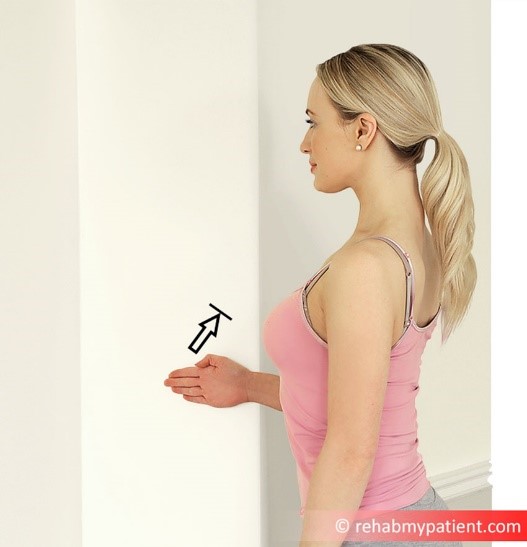
General information
A thick, triangular muscle, infraspinatus is one of the four rotator cuff muscles, along with the subscapularis, teres minor and supraspinatus muscles. This muscle mostly covers the scapula’s dorsal surface.
Literal meaning
The muscle below the spine.
Interesting information
Although the main action of this muscle is shoulder external rotation, it also assists in stabilising the glenohumeral joint.
Origin
Infraspinous fossa of scapula.
Insertion
Greater tubercle of humerus.
Function
Shoulder joint: Arm external rotation.
Stabilises humeral head in glenoid cavity.
Nerve supply
Suprascapular nerve (C5, C6).
Blood supply
Suprascapular artery, circumflex scapular arteries.

Relevant research
The research shows that the infraspinatus and subscapularis have important roles in shoulder abduction, and that they can generate forces that are two to three times greater than the forced produced by the supraspinatus muscle.
Escamilla, R. F., Yamashiro, K., Paulos, L., & Andrews, J. R. (2009). Shoulder muscle activity and function in common shoulder rehabilitation exercises. Sports medicine (Auckland, N.Z.), 39(8), 663–685.
Infraspinatus exercises
Infraspinatus and subscapularis activity have generally been reported to be higher in the 'full can' compared with the 'empty can'
Escamilla, R. F., Yamashiro, K., Paulos, L., & Andrews, J. R. (2009). Shoulder muscle activity and function in common shoulder rehabilitation exercises. Sports medicine (Auckland, N.Z.), 39(8), 663–685.

Full can
This exercise strengthens the infraspinatus. Stand with your arms hanging down by your sides. Hold a light dumbbell in each hand. Raise your arms to the sides, with your thumbs pointing up and elbows straight, until your arms are parallel to the floor. Lower and repeat.

Isometric shoulder external rotation wall
Stand with your side to a wall or a door frame. Tuck your elbow into your body. Push your arm outwards away from your body, into the wall. Keep your elbow tucked into your side as you perform the movement. This will cause a contraction of the shoulder muscles. Hold the contraction and relax. Repeat as required.
Sign Up
Sign up for your free trial now!
Get started with Rehab My Patient today and revolutionize your exercise prescription process for effective rehabilitation.
Start Your 14-Day Free Trial